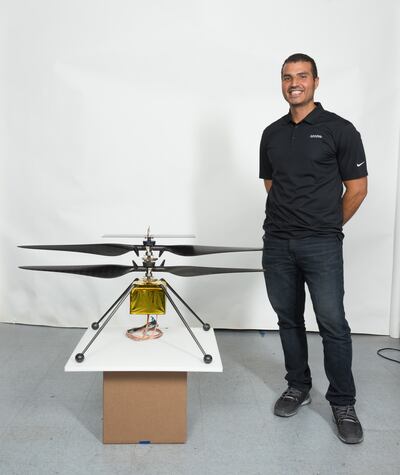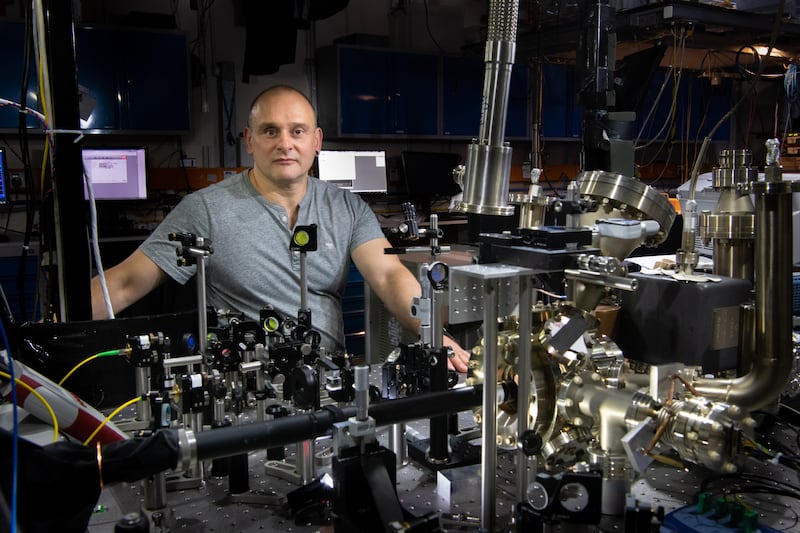It is a measure of how technology has advanced that a modern smartphone is now more powerful than the vast computer Nasa used to manage the 1969 Apollo 11 mission, which culminated in Neil Armstrong and Buzz Aldrin walking on the Moon.
This extraordinary progress in computing power is set to continue and even accelerate, because the world is on the cusp of the era of quantum computing, which could push forward the boundaries of many industries — and lead to environmental benefits.
Prof Winfried Hensinger, director of the Sussex Centre for Quantum Technologies at the University of Sussex in the UK, said that quantum computers will solve problems “much, much faster” than conventional computers.
“I don’t mean twice as fast or five times as fast,” he said. “A quantum computer can take on certain problems that a classical computer might take billions and billions of years to solve.
“It’s a different way altogether to solve problems and will have some highly disruptive applications.”
Interest in the field is such that New York University Abu Dhabi in April has been hosting a “Hackathon for Social Good in the Arab World” with a focus on how quantum computing could improve sustainability.
From improving electric car batteries to making the production of fertilisers less energy intensive, the ways in which quantum computing could reduce harmful impacts on the environment are diverse.
How does quantum computing work?
Quantum computing uses the laws of quantum physics — which describe how the world works, in terms of energy and matter, at the level of atoms and subatomic particles — to solve problems that classical computers are unable to cope with.
Being based on quantum physics, quantum computing has the potential to, for example, model how chemical reactions take place, potentially eliminating the need to carry out reactions in a laboratory to develop drugs.
Traditional computers store information as a zero or one, but a quantum bit or qubit (the unit of information stored by quantum computers) does not have to be in one state or another.
It can be in more than one state simultaneously, a complexity that is difficult to grasp but which gives quantum computers their special properties, allowing the creation of algorithms that can solve problems at a fundamental level.
“We assume some quantum processes are involved,” said Prof Myungshik Kim, a professor in theoretical quantum information sciences at Imperial College London. “A quantum computer is a natural device to simulate such processes, [such as] chemical processes involved in energy and environmental problems.”
Among the industrial processes that could be optimised is carbon capture and storage, in which CO2 created by industrial plants is, instead of being released into the atmosphere, captured and turned into a form that can be stored permanently.
“We have more ability to come up with better solutions, simulations and ways to compute data for more scenarios. We can solve problems like that,” said Loay Elbasyouni, a Palestinian-American electrical engineer who has worked on power electronics in multiple industries, and who was a judge at the hackathon.
“We're going to be limited in solving some problems, such as computing traffic or energy distribution, until we get to the level where we can utilise quantum computing.”

So far, quantum computing has not been used to solve major real-world practical problems, said Prof Hensinger, who is also co-founder, chief scientist and chairman of Universal Quantum, a company working to scale-up quantum computing technology. Instead, the focus has been on demonstrating that the technology works as it should, what researchers call “proof of principle”.
Among the companies that he and his colleagues are working with is the aerospace and defence contractor Rolls-Royce. The collaboration aims to develop quantum computers that could improve the efficiency of aircraft engines, potentially resulting in environmental benefits by reducing carbon emissions.
“Quantum computers are being developed hand-in-hand with applications,” Prof Hensinger says. “The reason why we work with Rolls-Royce is because we need to develop the software and the hardware hand-in-hand, and that’s best done with a user company motivating the production of the hardware.
“This is how quantum computing will emerge. Users will partner with quantum computing companies working on a particular problem and try to reach for low-hanging fruit.”
Quantum computers could also be used for optimising everything from timetables for railway companies through to door-to-door deliveries.
Another potential application is in improving the process of nitrogen fixation — taking nitrogen from the air — to create nitrogen fertilisers.
This is an incredibly energy-intensive process and accounts for about 2 per cent of global CO2 emissions, so improvements could provide significant environmental benefits.
“To solve some of the more important problems, maybe we’re not there yet,” says Prof Kim. “Is it because we don’t have enough number of qubits or because the error rates or some other things or software not available? I think it’s a combination of all these things. We are not there yet, but we’re making good progress.”
Currently some of the world’s biggest IT multinationals are working with computers with a capacity of around 100 qubits, but to tackle the biggest problems may require machines with 100,000 or one million qubits.
Increasing the capacity of quantum computers is a key focus of Prof Hensinger’s research. In a major step to making more powerful machines, he and his colleagues recently connected two quantum computing microchips together.
As of now, he said, it is likely that “we haven’t even scratched the surface of some applications of quantum computing”.
He cautions that huge strides will not be made overnight, but is very optimistic about what is likely to be achieved in the next decade or so.
“Things are now becoming really, really concrete and we’re starting to build machines,” he said. “Every time I go in my lab I’m just blown away by what we’re actually doing. There couldn’t be a more exciting time.”







